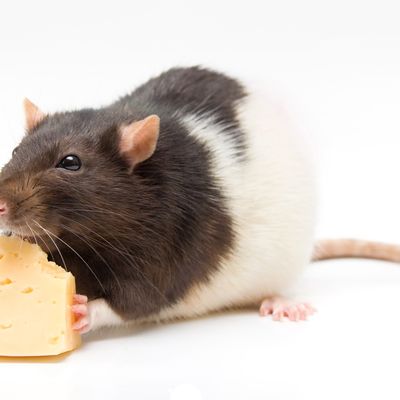
The biggest restaurant story of April: rodents, specifically the rats that shut down a Dunkin’ Donuts in midtown and, of course, the lone mouse spotted at Dominique Ansel Bakery that ultimately led to a Health Department shutdown of the Cronut palace. (Not to mention that rat running around the subway car.) Anything involving rodents has an inherent ick value, but every New Yorker knows dealing with them is also part of life in the city. So we wondered: What’s the worst that could happen to you if you actually ate rodent-infected food? Sure, it’s gross, but is it truly dangerous?
Officially, the CDC lists seven diseases North American rats and mice transmit directly and 11 they transmit indirectly. None sounds good, and several can kill you. Theoretically, food or liquid served with any living bacterium or virus puts you at risk of catching something, and essentially the only thing New York rats won’t eat is rodent poison — worth noting: the pioneering rodentologist Martin Schein claimed scrambled eggs are a favorite food — so it’s really not like one pantry food, if rodent-accessible, is safer than another. Foodborne disease is transmitted through saliva, urine, and droppings. In the course of one day’s food rummaging, a rat can unload 50 half-inch droppings.
Without even including the millions of mice in NYC, some estimates say rats alone outnumber New Yorkers 2 to 1 in the city. The two rat species native to New York (Norway and black) carry things that sound like they’d appear in scenes from The Walking Dead: hemorrhagic fever, rat-bite fever, salmonellosis, leptospirosis, and listeriosis. The good news is that, while restaurant rodent infestations are uncomfortably common, outbreaks of these rodent-borne diseases are not. But the bottom line is that contamination by rodent is still a possibility in New York, even if the odds are low. From a worst-case-scenario perspective, here’s what you could get the next time you bite into a dirty doughnut:
Dander and hair allergies: Studies suggest a quarter of us may be allergic to rodents, and some researchers consider mice a leading cause, if not the leading cause, of asthma. For this to really mess you up, though, you’d need a bad rodent allergy and food that was absolutely covered in dander or hair.
Leptospirosis: You get this bacterial infection from foods or liquids splashed with rodent urine. It doesn’t matter what kind of rodent, as long as the pee stays moist on the food. Nine in ten people get rough but manageable symptoms (headaches, fever, diarrhea), making it look deceptively flulike. For one infected person in ten, though, it can cause “multiorgan failure.”
Listeriosis: This bacterial infection can be found in rodent excrement and can, in the worst cases, cause blood infection or meningitis. It can grow at low temperatures, and a study conducted in Tokyo — another city with a large urban rat population — found that nearly 7 percent of black rats roaming city buildings are carriers.
Rat-Bite Fever: Don’t be tricked by the name; you don’t really need to be bit. It also comes in a foodborne version called Haverhill fever, after a Massachusetts town where infected rats tainted the milk. It’s rare, but scientists have learned it’s frighteningly fatal in at-risk groups, as high as 53 percent, even. In fact, a San Diego boy died last summer after he was bitten by his pet rat Oreo.
Hantavirsuses: Internal bleeding is the hallmark symptom of these viruses, which are carried by rodents, but are transmissible by food and airborne contact. Doctors used to think infections couldn’t move person-to-person, but recent research shows that’s probably wrong, so (in theory) a sick rat in a trap could potentially infect an employee, who could in turn give it to customers before their appetizers even arrived. Any food is at risk if it is not stored in rodentproof containers, one of the many reasons the DOH requires storage in rodentproof containers at least six inches off the floor.




